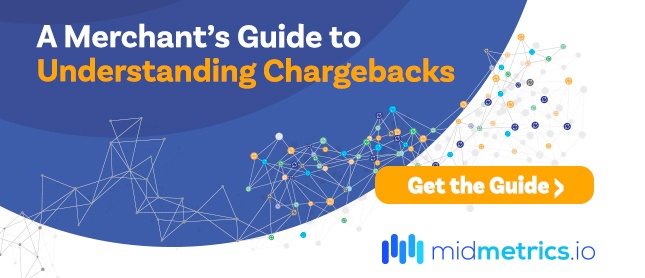
Chargeback Rate: Understanding Your Chargeback to Sales Ratio
By Chris Alarie on May 11, 2021
Among the holy commandments for merchants is an oft repeated but rarely explained admonishment: do not allow your chargeback to sales ratio to surpass 1% lest you reap devastating consequences. But this advice, however valuable, necessarily raises certain questions.
What, exactly, is a chargeback to sales ratio? How many chargebacks are you allowed? Why is it so important to keep this below the 1% threshold? What can I do to keep my business’s chargeback to sales ratio below 1%? This article will help to answer those questions.
What is a Chargeback Ratio?
At its basic level, a chargeback to sales ratio—or chargeback rate—is a simple statistical chargeback calculation. Take the number of chargebacks over a particular period of time, divide it by the total number of transactions, and multiply by 100 in order to present it as a percentage.
In general, the most important chargeback ratio is the one calculated by the card brand, as those are the chargeback rates that most frequently result in the most serious consequences. Different card brands have slightly different methods for calculating chargeback ratios. For example, Visa calculates chargeback rates by dividing a particular month’s chargebacks by that particular month’s total number of transactions while MasterCard divides a particular month’s chargebacks by the previous month’s total transactions.
One small, beneficial aspect of chargeback ratio calculations is that, if a chargeback continues into pre-arbitration, it is only counted as a single chargeback for ratio calculation purposes.
Perhaps the most detrimental aspect of chargeback rate calculations, from a merchant’s perspective, is the fact that win rates (from chargeback representment) do not factor into the calculation at all. Even if a merchant disputes a chargeback and wins, that chargeback is still counted toward the merchant’s chargeback ratio.
How Many Chargebacks Are You Allowed?
Excessive chargebacks can result in too high of a chargeback ratio. The threshold at which card brands generally begin assessing consequences against merchants is if the chargeback rate surpasses 1%—or, alternatively, 100 chargebacks per month.
The exact specifics of this limit vary according to circumstances and there are measures and degrees of leniency. It is more of a rule of thumb than a golden rule. In fact, American Express and Discover both employ that 1% chargeback rate as a recommended limit rather than an official one. But for the merchants who surpass these thresholds enough to elicit consequences, the punishment can be severe.
What Are the Consequences of Excessive Chargebacks?
Both Visa and MasterCard have programs for merchants who violate the 1% chargeback threshold and demonstrate a high risk for chargebacks. Those programs—the Visa Chargeback Monitoring Program and MasterCard Excessive Chargeback Program, respectively—involve higher levels of chargeback monitoring by the card brands and additional fees and requirements for the merchants. In the context of a merchant who has shown a tendency toward chargeback rates exceeding 1%, it is effectively a probationary program before the most serious consequences are levied.
For a merchant who continues to exceed a 1% chargeback rate beyond what the card brand deems acceptable, the consequences are severe: the merchant account may be canceled, and the merchant may be added to a blacklist such as the Terminated Merchant File or the MATCH List. This is effectively a death penalty for a business. In order to avoid this ruinous end, merchants need to implement chargeback prevention policies to keep their chargeback ratios low.
How Can I Keep My Chargeback Rate Low?
As mentioned above, win rates are not considered when calculating a chargeback ratio. As a result, the only way to keep a chargeback rate below the all-important 1% is to prevent chargebacks before they happen.
One important strategy for preventing chargebacks is to implement procedures for detecting fraud before it can lead to chargebacks. Understanding the different kinds of fraud (friendly fraud, chargeback fraud, and true fraud), knowing what the possible warning signs are for fraud, and preventing potentially fraudulent transactions from being processed are all essential parts of maintaining a low chargeback ratio.
Another important proactive measure for reducing chargebacks is emphasizing customer service. Well-trained customer service representatives can convert potential chargebacks into significantly less harmful refunds or perhaps even solve issues in ways that do not involve a return of funds.
At the most basic level, the fundamental technique for preventing chargebacks begins with understanding the source of chargebacks. A comprehensive chargeback management solution that allows you to examine your payments ecosystem at both the macro and micro level is essential. It allows you to spot broad trends while also parsing the fine-grained details.
View Your Chargeback to Sales Ratio in Real-Time
There are three things the right chargeback management solution must do for you. First, provide you with the right tools you need to manage, fight, and analyze your chargebacks. Second, show you how to use those tools effectively. Third, and most importantly, it will tell you exactly where your chargeback to sales ratio stands and how well your solutions are performing.
MidMetrics thoroughly covers all three bases with a full suite of proprietary chargeback tools, including Management Dashboards, In-Depth Analytics Tools, Chargeback Alerts, and On-Demand Reports. This gives you one powerful platform where you can manage your chargebacks and oversee the protection of your merchant accounts in real time, all for one price.
An alternative would be to assemble similar tools from a variety of providers, but the difficulty there would be getting the same level of effectiveness without spending a lot more money. MidMetrics is designed by chargeback experts to be easy for merchants to set up and integrate with their existing systems, yet powerful enough to protect merchant accounts from all types of chargebacks.
Want to see MidMetrics in action? Book a demo with one of our chargeback specialists today.
For merchants, understanding chargebacks is essential to in order to fight them correctly and protect merchant accounts and revenue. We cover all this and more in our guide, A Merchant's Guide to Understanding Chargebacks.



